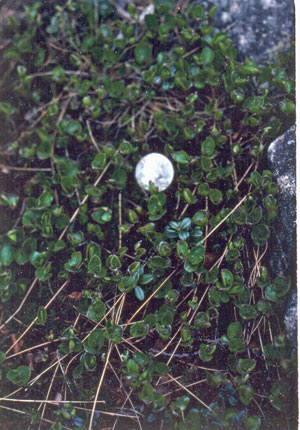DACF Home → Bureaus & Programs → Maine Natural Areas Program → Communities, Plants, and Animals → Rare Plants → Salix herbacea

Salix herbacea L.
Dwarf Willow
- State Rank: S1
- Global Rank: G5
- State Status: Threatened
Habitat: Arctic regions, mossy alpine areas on granitic, siliceous or schistose mountains. [Alpine or subalpine (non-forested, upland)]
Range: Circumboreal, south to Mount Katahdin, Maine, Mt. Washington, New Hampshire, and Essex County, New York.
Aids to Identification: Willows are recognized by their winter buds and flowers. Their buds are covered by a single, cap-like scale. Their flowers are very small and are borne in catkins. Oval to suborbicular leaves which are green on both sides and may be indented at the apex. Each stem has only 2-4 leaves. Catkins are small (10 - 17 mm) with 5-12 flowers and brown scales. Fruits are nearly sessile, 3-6 mm in length.
Ecological characteristics: The only known Maine occurrence of this species was documented from above treeline on Mount Katahdin.
Phenology: Flowers late June - September.
Family: Salicaceae
Synonyms: None noted.
Known Distribution in Maine: This rare plant has been documented from a total of 1 town(s) in the following county(ies): Piscataquis.
Reason(s) for rarity: Disjunct from principal range.
Conservation considerations: Populations could be threatened by heavy recreational (hiking) use.